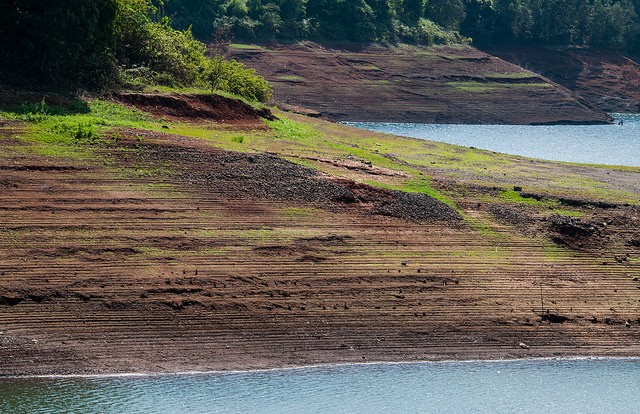This is an excerpt from a post that was originally published on the CIAT blog related to work supported by WLE in the Tana River basin. Read the full post.
If you were lucky enough to receive roses this Valentine’s Day, they could well have come from Kenya. Within 24 hours of being cut, millions of roses, like these grown on the banks of the Tana River watershed were whisked off to lovers this week, mostly in Europe. With record exports to Australia, demand is growing elsewhere, as Kenya continues to flex its muscle as the world’s fourth-biggest supplier of cut flowers after the Netherlands, Ecuador and Colombia. The altitude and climate are a match made in heaven for flowers.

Yet water is a resource in dwindling supply. Dams like this one – Ndakaini Dam, which supplies 80 percent of Nairobi’s water – have been hit by drought. Here, water from the dam is being let out, to remove silt sediments from the bottom and make room for more water. Protecting water supplies is more important than ever. But water management is becoming more complicated, with different consumers competing for less water. From flower farms and smallholder farmers, to the largest electricity supplier in the country and the average Nairobi user, each drop is in demand. Costs could spiral if action isn’t taken.













